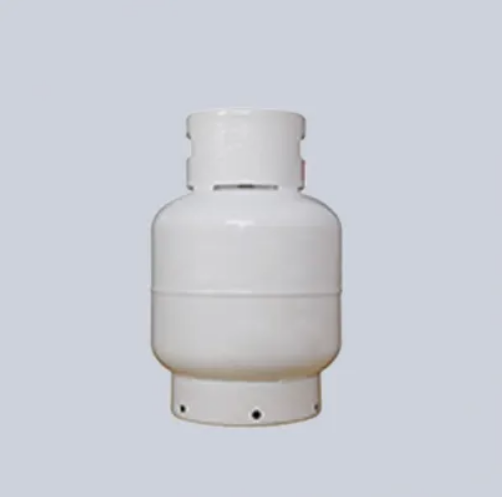Liquefied Petroleum Gas (LPG) is a widely used source of energy for cooking, heating, and powering various appliances in homes and businesses around the world. LPG is preferred for its efficiency and convenience, but like any fuel source, it comes with its set of common issues and potential hazards. Understanding these issues and knowing how to troubleshoot them is crucial for the safe and efficient use of LPG cylinders.

Common Issues with LPG Cylinders:
Leaking Gas:
Safety First: If you suspect a gas leak, turn off all appliances, extinguish any open flames, and avoid creating sparks.
Check the Cylinder Valve: Examine the cylinder valve for visible damage or loose connections. If you find any issues, contact your LPG supplier or a professional technician.
Perform a Soap Test: Mix a solution of water and liquid dish soap and apply it to the valve and connections. If bubbles form, there's a leak. In this case, do not use the cylinder and seek professional help immediately.
Issue: One of the most critical issues is a gas leak. It can be identified by a distinct smell or a hissing sound near the cylinder or gas line.
Troubleshooting:
Low Gas Pressure:
Check Cylinder Status: Ensure the cylinder is not empty or running low on gas.
Inspect the Regulator: Ensure that the regulator is correctly connected to the cylinder and that it is not damaged. Replace the regulator if necessary.
Issue: Appliances may exhibit weak flames or take longer than usual to heat up, indicating low gas pressure.
Troubleshooting:
Regulator Freeze-Up:
Regulator Cover: Consider using a regulator cover or insulation material to keep the regulator warm in cold conditions.
Check for Ventilation: Ensure proper ventilation around the regulator to prevent ice buildup.
Issue: In cold weather, ice may form on the regulator, obstructing the gas flow.
Troubleshooting:
Cylinder Doesn't Fit Appliances:
Use the Correct Cylinder: Verify that you're using the right type of LPG cylinder for your appliances. Different gases (e.g., butane, propane) have varying connectors.
Use Adapters: In some cases, you may need an adapter or hose with the appropriate connector to link the cylinder to the appliance.
Issue: Some cylinders have valves that don't match the connectors on certain appliances.
Troubleshooting:
Cylinder Runs Out Quickly:
Check for Leaks: Inspect the gas line and connections for leaks, as even small leaks can lead to rapid gas depletion.
Appliance Efficiency: Ensure that your appliances are operating efficiently. Inefficient appliances can consume more gas than necessary.
Consider a Larger Cylinder: If your gas consumption is consistently high, consider using a larger LPG cylinder.
Issue: Frequent replacement of LPG cylinders can be costly and inconvenient.
Troubleshooting:
Difficulty in Turning Cylinder Valve:
Lubrication: Apply a small amount of lubricant to the valve stem to ease its operation.
Inspect for Damage: Check the valve for any signs of damage or excessive wear. If the valve is damaged, it should be replaced.
Issue: The cylinder valve may become difficult to open or close, possibly due to rust or debris.
Troubleshooting:
Unusual Smell or Odor:
Gas Leak Check: If you detect an unusually strong smell of gas, it may indicate a leak. Follow gas leak troubleshooting steps mentioned earlier, and contact your LPG supplier immediately.
Persisting Odor: If the smell persists after ensuring there are no leaks, contact your LPG supplier. They can assess the odorant levels in the gas.
Issue: While LPG itself is odorless, it is typically odorized with a distinctive smell to make gas leaks detectable.
Troubleshooting:
Appliance Flame Goes Out:
Gas Pressure and Cylinder Status: Check if the gas pressure is sufficient and if the cylinder is not empty.
Clean Burner Components: Clean burner components to remove debris or blockages that may disrupt the flame.
Issue: The flame on your gas appliances repeatedly goes out.
Troubleshooting:
Rusting or Corrosion:
Proper Storage: Store LPG gas cylinders in a dry, well-ventilated area away from moisture. Ensure they are kept upright and off the ground.
Regular Inspection: Inspect cylinders regularly for signs of rust, damage, or corrosion. Rusty or damaged cylinders should be replaced to prevent safety hazards.
Issue: Over time, LPG cylinders may show signs of rust or corrosion.
Troubleshooting:
Safety Concerns:
Education: Educate yourself and others in your household or workplace about LPG safety practices, including proper handling, storage, and emergency procedures.
Follow Guidelines: Always follow safety guidelines and recommendations provided by your LPG supplier or local authorities.
Issue: General safety concerns regarding the use of LPG.
Troubleshooting:
In summary, understanding the common issues associated with LPG cylinders and knowing how to troubleshoot them is essential for safe and efficient use. Safety should always be a top priority when dealing with LPG, and any issues related to gas leaks or cylinder damage should be addressed promptly by trained professionals. By following proper safety procedures and maintenance guidelines, users can enjoy the benefits of LPG while minimizing risks and inconveniences.





Comments
0